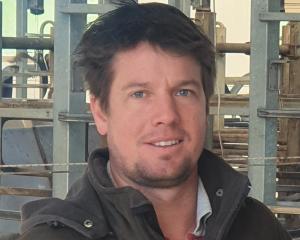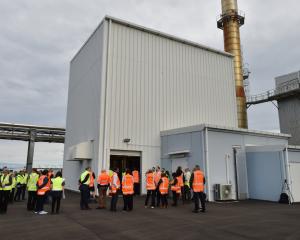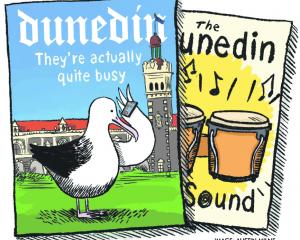
Wind farm site manager Davie said for the second stage of the Kaiwera Downs wind farm, he was responsible for the interfacing between the earth moving, road metal and electrical contractors — to name a few — in building the $486 million project.
"My job is to make sure they’re all playing nice in the sand pit," Davie said.
A former earth-moving, cable-laying contractor himself, Davie said he cut his teeth on wind farm technology while learning from his superior, experienced project manager Stewart Reid, during phase one of the wind farm.
The Mercury Energy project’s first phase, completed in 2023, included 10 turbines providing energy to the equivalent of 20,000 homes.
Now in its second phase, Davie said workers were spread across the 2200ha of rolling hills busy digging holes, blasting rock and pouring concrete for the underground cement bases of 36 turbines.
Standing at a height of 88m, the new turbines are 11m higher than the first 10 and will increase the wind farm’s from output of 43MW in stage one, to 198MW.
Once complete, the second stage will generate enough electricity to power the equivalent of an additional 73,000 homes
By the end of 2026, the new turbines are projected to be in full generation with the project completed the following March.
Davie said the site was constantly maintaining the land it shares with a surrounding bull farm, installing silt fencing, building cattle stops and reinstating a private airstrip lost in the production.
The silt fencing acts like a sieve, protecting the area’s water from being contaminated by the dirt run-off from all the digging, Davie said.
Rocks excavated on site are crushed, recycled and laid out as strong metal roads for trucks carrying heavy materials and for farmers to use beyond the project’s completion.

As a long time Gore local, Davie said he was interested in Mercury’s "social licence", which has led to it investing around $60,000 back into the Kaiwera community, funding play groups, sports teams, schools and other initiatives.
"We’ve really focused on the Kaiwera district," he said.
Davie also said Mercury, with a few wind farms under its belt, had realised the value of getting the surrounding locals "onside".
He said the utility retailer was "very fussy" about being environmentally responsible as well as socially responsible, too.
When asked about the hardest part of the job, Davie said the weather constantly created new challenges, foiling plans at a moment’s notice.
He said because of that he had learned to be "light on his feet" with diversions in place to manage his teams and the unruly weather of Southland.
There are a great mix of nationalities on the site, Davie said, with a lot of Filipinos as well as French, Brazilian and "a few poms too".
He said the company tried to look for local contractors, but to find experts in these particular fields in Southland to work at such a large scale was tricky.
"We tend to like to deal with people that we know can do the job for us, he said.
However in turn, the contractors from Christchurch, Timaru and the West Coast still hired locals, he said, with about half the workforce coming from the area.












